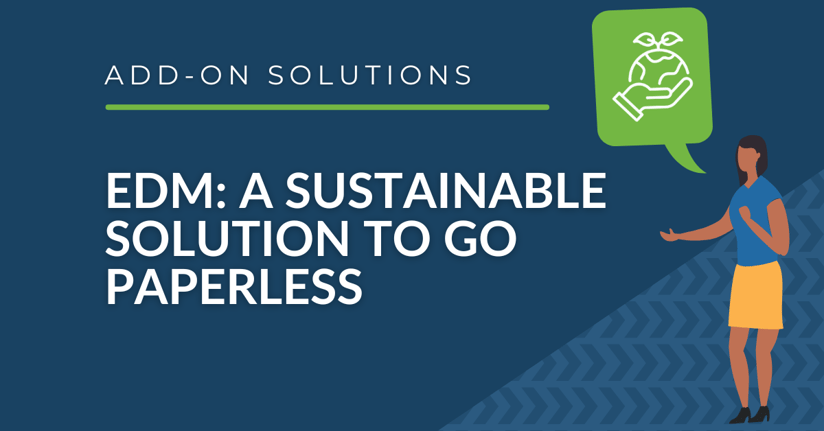By X3clouddocs
As businesses continue to strive towards sustainability goals there are plenty of avenues of investigation open; from energy efficiency, waste management, & general decarbonisation. For businesses still processing large volumes of paper documentation, there are several environmental benefits that Electronic Document Management (EDM) provides over traditional paper-based document management.
The implementation of EDM can deliver the following benefits, which we will explore in turn – however, each is, to an extent, interrelated, so separating them into separate concepts is somewhat reductive.
- Reducing paper usage
- Minimising waste (either landfill or recycling).
- Decreased energy usage
- Reduction in greenhouse gas emissions
- Minimisation of environmental pollution
Reduce paper usage:
EDM eliminates (or reduces) the use of paper; which on the surface is a simple observation but may have deeper consequences overall.
The reduction in paper consumption will contribute to a net reduction in the number of trees cut down for paper production and the energy which takes place in this process along the full supply chain (from the forestry, processing, production and distribution). This results in a lower carbon footprint and helps to preserve natural resources. The United States Environmental Protection Agency (EPA) reports that the production of paper and printing contributes to air and water pollution, deforestation, and the waste of natural resources.
Reducing paper will contribute to all five of the benefits listed above, along the supply chain and usage workflow.
Energy Savings:
Beyond paper production, which is estimated to account for 15% of energy consumed in the US, EDM software requires less energy to store, access and distribute documents, compared to paper-based document management, which requires energy for printing, copying, and transporting paper. Not to mention the energy consumption in secure disposal.
Through the use of shared physical infrastructure (using multi-tenant SaaS EDM provisions), there is an economy of scale for shared access and storage for documents in the cloud.
waste reduction:
The volume of paper produced and consumed globally on an annual basis is enormous, albeit on a declining trend, significantly accelerated by the rapid adoption of remote working practices since
- The production of paper products is a significant contributor to industrial waste, and at a consumer level, the waste associated with printing (not just paper, but ink/toner and other associated eWaste) is significant.
Undertaking to use EDM can eliminate large volumes of waste through the single production of a document which can be accessed infinitely and simultaneously across multiple locations; eliminating multiple printing and waste cycles.
lower greenhouse gas emissions:
The transportation of paper documents contributes to greenhouse gas emissions, while electronic documents can be shared and accessed from anywhere with an internet connection, reducing the need for physical transportation. It has been estimated that the use of electronic documents can reduce CO2 emissions by up to 60% compared to paper-based document management.
It is challenging to directly compare electronic and physical document CO2 impact, the profiles of energy usage are significantly different given the physical vs virtual nature and their use of passive or energised infrastructure. What can be asserted is that the emissions from paper production, transportation, and disposal, in addition to those associated with the printing and transmission of documents at a consumer level, are significant; and the adoption of shared infrastructure (cloud-architected EDM) for the replacement of these processes would be expected to be more efficient and less polluting.
improved accessibility:
Electronic documents can be easily transmitted, accessed and shared with others, regardless of location, reducing the need for physical storage space and the transportation of physical documents. Furthermore, the provision of document management via the cloud facilitates remote working and eliminates unnecessary travel to office locations to process paperwork.
As part of a wider ESG strategy, although unrelated to environmental sustainability, the use of digitised documents also provides enhanced accessibility with regard to visual impairments, facilitating the use of eReaders and text-to-speech technologies.
EDM can offer a more sustainable and environmentally friendly approach to document management compared to traditional paper-based methods. Performing the actual analysis of this is very challenging due to the interrelated nature of the impacts; however, the savings and benefits which can be inferred are logically coherent based on the evidence available.
Read more about X3clouddocs
At the heart of X3CloudDocs is a shared passion for business efficiency. We aim to deliver immediate value to your finance department through digital transformation and automation. X3CloudDocs is dedicated to saving both time and money, allowing your employees to focus on the things that matter most. Let robots do robot work!
Reach out to our team to find out more about the X3CloudDocs document management solution.




